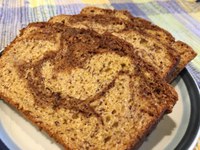Prairie Fare: How to Prepare for an International Adventure
(Click an image below to view a high-resolution image that can be downloaded)
By Julie Garden-Robinson, Food and Nutrition Specialist
NDSU Extension Service
“Mom, can you bring me a toucan?” my older daughter asked with a grin.
I had been reading a travel guide, and she admired the cover photo of the brightly colored bird with a large beak.
“Sorry, but they will not let me bring you a bird from Costa Rica,” I replied. I could almost imagine it flying around the cabin in the plane.
Our dogs trotted over to where I was standing. I suppose they also wanted me to bring them a live souvenir from Costa Rica, such as a fuzzy three-toed sloth. They would become bored with this new playmate because it is the world’s slowest animal. They might have more fun with one of the energetic monkeys I might encounter.
However, they will not have a new playmate as the result of my travels.
I hope I do not bring home any mosquito bites; Zika virus is a growing issue in South America. Our friendly Extension entomologist gave me some good advice about avoiding mosquito bites: Apply mosquito repellent with at least 20 percent DEET, and wear pants and long-sleeved shirts. Be sure to avoid wearing perfume, which attracts mosquitos.
I can use these helpful tidbits this summer in the Midwest, too.
In preparing for my trip, I visited the public health department and learned a lot about international travel because I am a “newbie” at this. I had my precautionary vaccinations several months ago. In fact, the informational handout warned me to stay away from any wildlife that might bite me.
I’m not going as a tourist. I will be honing my leadership skills and learning more about another culture, its food and its agricultural practices.
Costa Rica produces excellent coffee, and I am anxious to enjoy it and potentially save room in my suitcase to bring some home. The country also grow bananas and “cacao” beans used in manufacturing chocolate. With those local foods, I could whip up some chocolate banana bread to have with my coffee. However, I am sure I won’t be baking during the trip.
Beans and rice are staple foods in Costa Rica, and I am ready for a simpler diet by enjoying some of the local cuisine. Beans and rice are inexpensive and nutritious because each food supplies an amino acid the other lacks. Together, they become a complete and nourishing source of protein, carbohydrate, and a variety of vitamins and minerals.
We will be provided with a steady supply of “safe water” as we explore the area. I take safe drinking water for granted, so this will be an ongoing lesson for me. I need to remember to avoid drinking any water while taking a shower and to use safe water when I brush my teeth.
Food safety experts warn us to avoid fruits and vegetables that have been rinsed with potentially unsafe water. I probably will be skipping the leafy greens on this trip, believe it or not. If vegetables are served hot, I am fine. I am bringing my vitamins to fill any nutrition gaps.
I really hope I do not forget any of the rules because I do not want to bring home intestinal bugs. Some types of foodborne illnesses can have lifelong consequences.
The Centers for Disease Control and Prevention (http://www.CDC.gov) provides several tips for people who are planning international travel. In fact, the CDC has a free “Can I Eat This?” app downloadable from its website. These are a few notes related to food and beverages from the CDC if you ever plan an international adventure:
- Have hot food because it is generally safe. Most bacteria are killed by heating to safe temperatures. However, be sure the previously cooked food has not been sitting at lukewarm temperatures all day because sometimes bacteria can produce toxins. The Food and Drug Administration, which provides the guidelines for U.S. food retailers, recommends holding “hot foods” at 135 F or higher.
- Have dry or packaged food, such as bread or crackers. Bacteria need a certain moisture level to grow.
- Avoid most raw foods (such as leafy vegetables that may have been watered or rinsed with unsafe water).
- Avoid most street vendor foods because the safety standards may be unknown.
- Avoid animal proteins from unfamiliar sources. In some countries, the meat inspection system is not as strict as the U.S. system.
- Have bottled water or canned beverages.
- Be cautious about milk, even if it has been pasteurized and is bottled. Make sure it has been kept cold and safe.
- Avoid drinking tap water and consuming ice made from the tap water in areas where the water is not considered safe. Freezing does not kill bacteria.
Here’s a recipe inspired by a couple of the foods grown in Costa Rica: chocolate and bananas. This recipe comes from the Utah Extension Service in Provo. It replaces some fat with nonfat yogurt and whole eggs with egg white. Both substitutions increase the protein content and reduce calories and fat. Using whole-wheat pastry flour instead of all-purpose flour increases the fiber content. I found the whole-wheat pastry flour in the “health foods” section of my grocery store. Enjoy a slice of this bread with some coffee.
Chocolate Marbled Banana Bread
1/2 c. semisweet chocolate chips
2 1/2 c. whole-wheat pastry flour
1 tsp. baking soda
1/2 tsp. salt
1/4 c. butter
1 c. sugar
1 1/2 c. mashed bananas (about 3 medium)
1/2 c. egg whites
1/3 c. plain nonfat yogurt
Preheat oven to 350 F. Melt the chocolate chips in a microwave oven for about 30 seconds. Stir well and set aside. Stir together the whole-wheat pastry flour, baking soda and salt. Cream together the butter and sugar; add bananas, egg whites and yogurt. Add the dry ingredients and stir just until blended. Divide the mixture in half. To one half, add the melted chocolate chips. Place about half of the plain mixture in one large or two small loaf pans. Add about 6 spoonsful of the chocolate mixture to the pans and swirl with a knife. Add the remaining plain mixture, then the remaining chocolate mixture and swirl together. Bake for 50 to 75 minutes, depending on the size of pan used. To test for doneness, insert a toothpick in the center. If the toothpick comes out clean, then it is done.
Makes 16 servings. Each serving has 190 calories, 5 grams (g) fat, 3 g protein, 32 g carbohydrate, 2 fiber and 190 milligrams sodium.
(Julie Garden-Robinson, Ph.D., R.D., L.R.D., is a North Dakota State University Extension Service food and nutrition specialist and professor in the Department of Health, Nutrition and Exercise Sciences.)
NDSU Agriculture Communication - April 14, 2016
| Source: | Julie Garden-Robinson, 701-231-7187, julie.garden-robinson@ndsu.edu |
|---|---|
| Editor: | Ellen Crawford, 701-231-5391, ellen.crawford@ndsu.edu |



